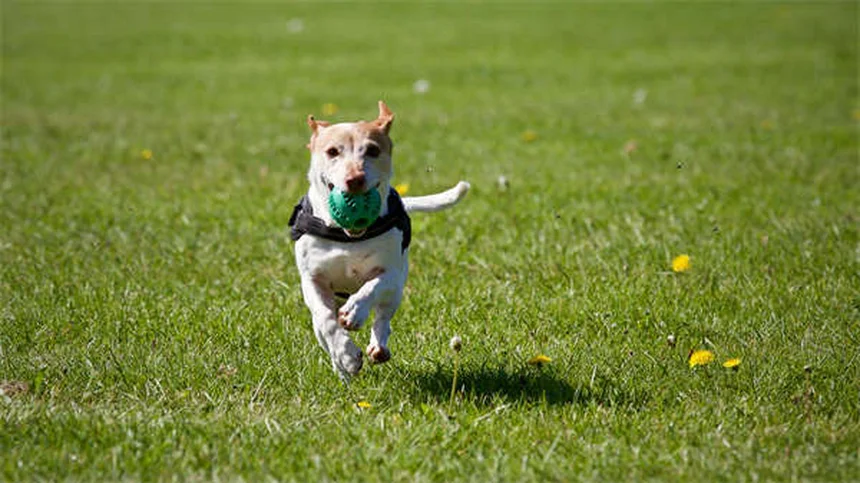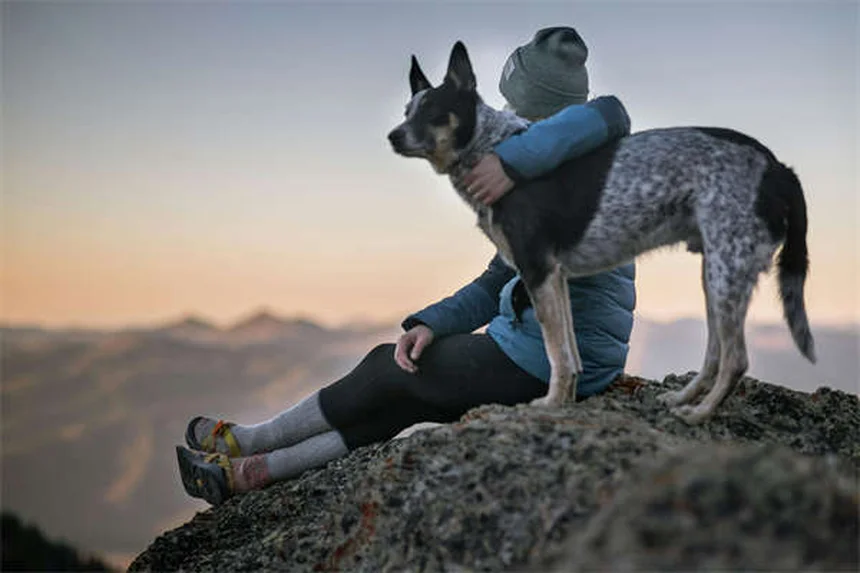Advertisement
How to tell how old a cat is? Here's the deal: you can actually estimate your feline friend's age by examining their teeth, coat, eyes, and mobility. As a vet tech with over a decade of experience, I've seen hundreds of cats and can tell you that while it's not an exact science, these physical markers give us pretty solid clues. The key is looking at multiple factors together - kind of like putting together puzzle pieces to see the whole picture. Whether you've adopted a stray or just want to understand your pet better, I'll walk you through exactly what to look for at each life stage, from those razor-sharp kitten teeth to the distinguished cloudiness of senior cat eyes.
E.g. :Rat Boggling Explained: Why Your Pet Rat's Eyes Pop Out
- 1、Cat Life Stages: From Tiny Furballs to Wise Old Souls
- 2、Decoding Your Cat's Age: The Detective Work
- 3、Why Age Matters More Than Just Numbers
- 4、Bonus Tips for Age-Defying Cats
- 5、Beyond the Basics: Understanding Your Cat's Unique Personality
- 6、Nutrition Through the Ages
- 7、Behavior Changes That Signal Aging
- 8、Special Considerations for Multi-Cat Households
- 9、The Emotional Side of Aging
- 10、FAQs
Cat Life Stages: From Tiny Furballs to Wise Old Souls
The Kitten Phase (0-1 Year)
Picture this: a tiny ball of fur with oversized paws and endless energy. That's your typical kitten! During this stage:
Kittens grow at an astonishing rate, sometimes doubling their size in just weeks. You'll notice their baby teeth (those needle-sharp little daggers!) start falling out around 3-4 months, replaced by permanent adult teeth. Their coordination improves dramatically too - from those adorable wobbly first steps to becoming miniature ninjas who can scale your curtains in seconds flat.
Young Adulthood (1-5 Years)
This is your cat's prime time - think of it as their college years through early career phase. They've reached their full size but still have that youthful spark.
At this stage, your feline friend is the picture of health: bright eyes that could spot a treat from across the house, a silky coat they maintain with military precision, and enough energy to make you wonder if they've secretly installed a nuclear reactor. You might notice some tartar buildup on their teeth toward the upper end of this range - kind of like how we start getting those first gray hairs in our late 20s!
Decoding Your Cat's Age: The Detective Work
 Photos provided by pixabay
Photos provided by pixabay
The Tooth Truth
Ever played dental detective? Here's your chance! A cat's teeth tell an age story better than any ID card.
Kittens have those tiny, razor-sharp baby teeth that could pierce steel (or at least your favorite sweater). By 6 months, they should have a full set of 30 adult teeth - white, clean, and ready for action. As cats age, you'll see more yellowing, tartar buildup, and possibly even some missing teeth. It's like reading tree rings, but way more cuddly!
Fur Real: Coat Clues
Your cat's coat is like their personal resume - it shows how well they're keeping up with self-care.
Young cats are basically feline models - sleek, shiny, and always camera-ready. As they hit middle age, you might notice some changes: maybe a few more mats, less luster, or even some dandruff. Senior cats often develop that "distinguished professor" look - slightly unkempt but full of character. Pro tip: Run your hand against the grain - older cats' skin tends to be less elastic and slower to snap back.
| Age Range | Coat Characteristics | Grooming Habits |
|---|---|---|
| Kitten (0-1) | Super soft, fluffy | Learning the ropes |
| Young Adult (1-5) | Silky, shiny | Fastidious - like a cat influencer |
| Mature (6-10) | Slightly coarse | Occasional lazy days |
| Senior (10+) | Thinner, possible mats | Needs some help |
Why Age Matters More Than Just Numbers
Health Considerations Through the Years
Did you know your cat's age directly impacts their healthcare needs? It's true!
Young adults might just need annual checkups - basically their version of a physical. But as they hit their golden years, bi-annual visits become crucial to catch issues early. Think of it like maintaining a classic car - the older it gets, the more TLC it needs to keep running smoothly.
 Photos provided by pixabay
Photos provided by pixabay
The Tooth Truth
Ever wondered how old Mittens would be if she were human? Here's the scoop:
That first year equals about 15 human years (no wonder kittens are such handfuls!). Each year after adds about 4-6 human years. So your 5-year-old cat? Basically a 36-year-old professional. Your 10-year-old? A sprightly 60-year-old ready for early retirement. And that 15-year-old napping in the sun? They've earned their 83 human years of wisdom!
Bonus Tips for Age-Defying Cats
Keeping Your Senior Cat Young at Heart
Who says older cats can't have fun? With some simple adjustments, you can keep your golden oldie feeling frisky.
Consider lower-sided litter boxes for arthritic kitties - nobody wants to do the high jump just to pee! Warming beds can soothe achy joints (think feline heating pads). And those interactive toys? Scale down the intensity but keep the engagement - maybe a slow-moving feather instead of that hyperactive laser pointer.
When in Doubt, Ask the Pros
Remember, these are general guidelines. Just like humans, every cat ages differently.
Your vet is the ultimate age detective. They can spot subtle signs we might miss - like tiny changes in kidney values or early arthritis indicators. Regular checkups are the best way to ensure your cat gets age-appropriate care, whether they're a bouncing baby or a wise old sage.
So next time you're snuggling with your feline friend, take a moment to appreciate their life stage. Whether they're a tiny terror or a dignified elder, every age brings its own special magic to the human-cat relationship. Now go give your cat some well-deserved pets - they've earned it!
Beyond the Basics: Understanding Your Cat's Unique Personality
 Photos provided by pixabay
Photos provided by pixabay
The Tooth Truth
You might be surprised to learn that not all cats age at the same rate! Some breeds are the marathon runners of the feline world, while others burn bright but fast.
Take the majestic Maine Coon - these gentle giants often don't reach full size until they're 3-5 years old, and they commonly live into their mid-teens. Contrast that with the exotic-looking Siamese, who typically mature faster but can live well into their 20s with proper care. And let's not forget about those adorable munchkin cats - their short legs don't slow them down one bit when it comes to longevity!
Here's a fun fact: Did you know that mixed breed cats often have what we call "hybrid vigor"? That's science-speak for "they tend to be healthier and live longer" because of their diverse genetic makeup. So while purebreds are beautiful, your average alley cat might just outlive them all!
The Indoor vs. Outdoor Debate
This is one of those topics that can start arguments at cat lover gatherings! Indoor cats typically live 2-3 times longer than their outdoor counterparts.
Think about it - when your cat stays inside, they're avoiding cars, predators, diseases from other animals, and all sorts of weather extremes. It's like comparing someone who works in an office versus someone who's a stunt double! But here's the catch - indoor cats need way more mental stimulation and exercise to stay happy and healthy. That's why we see so many cat trees, puzzle feeders, and window perches in homes with indoor kitties.
Nutrition Through the Ages
Kitten Chow vs. Senior Special
Would you feed a baby steak? Probably not! The same logic applies to your cat's diet at different life stages.
Kitten food is packed with extra protein and calories to fuel their rapid growth - it's like the feline version of a college student's diet (minus the ramen noodles). Adult maintenance food keeps things balanced, while senior formulas often include joint supplements and are easier to digest. And here's something most people don't realize - many "all life stages" foods are actually formulated for kittens, which can lead to weight gain in older cats!
Ever wonder why your older cat seems pickier about food? That's because their sense of smell declines with age, making food less appealing. Warming it slightly or adding a bit of low-sodium broth can work wonders!
The Hydration Equation
Here's a shocking fact: Many cats live in a state of mild dehydration without us even realizing it.
Cats evolved from desert animals, so they're not naturally big drinkers. But as they age, kidney function declines, making hydration even more crucial. That's why you see so many cat water fountains these days - the moving water attracts them to drink more. Some clever tricks? Place multiple water bowls around the house (away from food - cats prefer this), or even add an ice cube to their bowl to pique their interest!
Behavior Changes That Signal Aging
The Sleep Shift
While all cats are champion nappers, their sleep patterns change dramatically over time.
Kittens sleep about 20 hours a day (with bursts of insane energy in between). Adults settle into a more predictable 16-18 hour routine. But senior cats? They might sleep even more, but often in shorter bursts because of discomfort or needing to use the litter box more frequently. If you notice your older cat sleeping less at night and more during the day, it might be time for a vet check to rule out pain or cognitive issues.
Play Preferences Evolve
Remember when your cat would chase anything that moved? Age changes what they find fun.
Young cats love high-energy play - think feather wands, laser pointers, and anything that lets them practice their hunting skills. Middle-aged cats might prefer interactive toys that challenge their brains, like puzzle feeders. And seniors? They often enjoy gentle play sessions with soft toys or simply batting at something slowly moving past them. The key is adapting to their abilities - an arthritic cat might not jump for toys anymore, but they'll still enjoy batting at something dragged slowly across the floor.
Special Considerations for Multi-Cat Households
Managing Different Life Stages Together
Ever seen a kitten pester an older cat to play? It's like watching a toddler try to get their grandparent to play tag!
When you have cats at different life stages, you need to be the referee. Make sure older cats have quiet spaces away from rambunctious youngsters. Feed them separately since their nutritional needs differ. And provide multiple litter boxes - seniors might need one with lower sides, while kittens might need one with higher sides to contain their enthusiastic digging!
Here's a pro tip: Use vertical space to your advantage. Cat trees with platforms at different heights let each cat find their comfort zone - kittens can climb to the top while older cats lounge on the lower levels.
Introducing New Cats at Different Ages
Did you know that kittens generally adapt to new homes more easily than adult cats?
When bringing a new cat into your home, their age dramatically affects how you should handle the introduction. Kittens are naturally curious and adaptable, while older cats can be set in their ways. A good rule of thumb? The older the cat, the slower you should take introductions. For seniors, it might take weeks of scent swapping and gradual exposure before they're comfortable with a new feline roommate.
The Emotional Side of Aging
How Cats Perceive Time
Ever wonder if your cat understands they're getting older? The answer might surprise you.
While we can't know exactly how cats perceive time, their behavior suggests they do recognize changes in their abilities. You might notice an older cat becoming more affectionate as they seek comfort, or becoming more vocal as their senses decline. Some cats even seem to develop a "bucket list" in their golden years - suddenly wanting to explore areas they previously ignored or trying new foods!
Preparing for the Rainbow Bridge
This is the hardest part of pet ownership, but being prepared can make it slightly easier.
As cats reach their final years, quality of life becomes the most important consideration. Are they still enjoying their favorite activities? Can they eat and use the litter box comfortably? Many vets recommend creating a "good day/bad day" calendar to objectively track their wellbeing. And when the time comes, more vets are offering in-home euthanasia services to let cats pass peacefully in familiar surroundings.
Remember, grieving a pet is completely normal. Don't let anyone tell you "it was just a cat" - these little creatures leave paw prints on our hearts that last forever.
E.g. :Any tips for figuring out an adult cat's age? : r/CatAdvice
FAQs
Q: How accurate are teeth for determining a cat's age?
A: Teeth are actually one of the most reliable indicators, especially for younger cats. Here's why: Kittens get their baby teeth at about 2-4 weeks, and these razor-sharp little needles are replaced by adult teeth between 3-6 months. By 1 year, most cats have bright white adult teeth with minimal wear. As they age, you'll see yellowing, tartar buildup (usually noticeable by age 3), and possibly even missing teeth in seniors. Think of it like rings on a tree - the more wear you see, the older your cat likely is. Just remember that dental care can affect this - a 10-year-old with regular cleanings might have better teeth than a 5-year-old who's never seen a toothbrush!
Q: Can my cat's energy level tell me how old they are?
A: Absolutely! While all cats sleep a lot (we're talking 12-16 hours daily), there's a big difference between life stages. Kittens and young adults are like furry little tornadoes - bouncing off walls one minute, passed out the next. Mature adults (6-10 years) start slowing down, taking more frequent naps between play sessions. Senior cats often show the most dramatic change - they might sleep 18+ hours and lose interest in high-energy toys. But here's the thing: health issues can mimic aging, so if your typically active 5-year-old suddenly becomes a couch potato, it's vet time!
Q: Why do older cats' coats look different?
A: Great question! As cats age, three main things happen to their coats: 1) They groom less (arthritis makes twisting difficult), 2) Their skin loses elasticity, and 3) Oil production decreases. Young cats are basically feline supermodels - their coats are sleek, shiny, and mat-free because they're constantly licking themselves. Older cats? Not so much. You might notice more dandruff, mats (especially in long-haired breeds), and a generally less lustrous appearance. Pro tip: Gently lift the skin on their back - if it doesn't snap back quickly, your cat's likely in their golden years.
Q: How can I tell if my cat has age-related vision changes?
A: Cat eyes are windows to their age! Kittens and young adults have those famous bright, clear peepers. Around 6-10 years, you might notice a slight bluish haze in the lens (called nuclear sclerosis - totally normal). Senior cats often develop more noticeable cloudiness or even cataracts. But here's what really gives it away: pupil response. Shine a gentle light (never directly!) - younger cats' pupils constrict quickly, while older cats react more slowly. Just remember - sudden vision changes at any age warrant a vet visit ASAP.
Q: Is the "1 cat year = 7 human years" rule accurate?
A: Nope, that's actually a myth! The real cat-to-human age conversion works like this: That first year equals about 15 human years (explains why kittens are such handfuls!). Each year after adds about 4-6 human years. So your 5-year-old cat? Basically a 36-year-old professional. Your 10-year-old? A sprightly 60-year-old. And that 15-year-old napping in the sun? They've earned their 83 human years of wisdom! This scale makes way more sense when you consider lifespan and development milestones. Just don't tell your cat you're doing math about their age - they prefer to think they're forever young!






